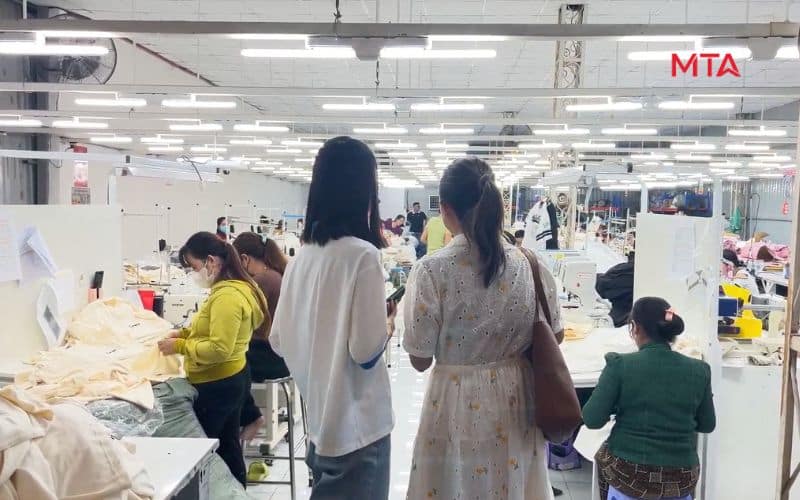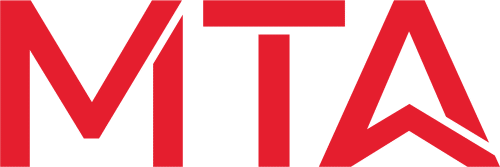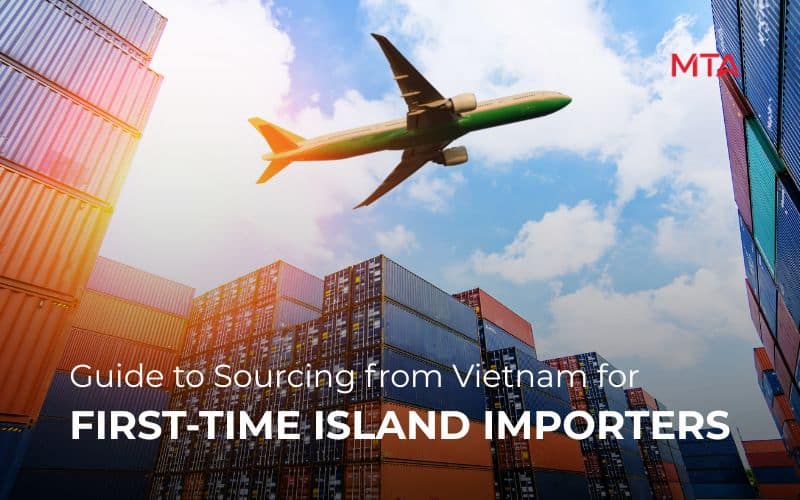For many ambitious entrepreneurs running businesses on islands, from the Pacific to the Indian Ocean, the idea of sourcing directly from Vietnam’s manufacturing hubs is incredibly appealing. It promises better margins, access to unique products, and the ability to stand out from local competitors.
Yet, that opportunity often comes with hesitation. The process seems complex, the distance feels immense, and concerns about supplier reliability, quality control, and long delivery routes can easily become overwhelming.
If you’re in this position, know that you’re not alone. The leap from buying from local distributors to importing directly from Asia is significant. But it is not as difficult or risky as it may seem. With a clear roadmap and the right partner, the process can be straightforward, secure, and transformative for your business.
What Makes Sourcing for Remote Islands Challenging?
Complex Logistics and High Shipping Costs
Products often need to travel through multiple steps, from the supplier to the mainland, then to a larger island, and finally to smaller islands. This multi-stage process increases transportation costs and extends delivery times, making logistics one of the biggest challenges for island sourcing.
Limited Market Size
Many islands have small populations, which means demand is relatively low. Businesses often need to import smaller quantities, making it harder to benefit from bulk discounts or economies of scale.
Infrastructure and Environmental Challenges
Islands often have limited warehouse space, smaller ports, and fewer transport options. Weather conditions such as storms or rough seas can disrupt shipments, making careful planning and reliable local partners essential to ensure products arrive safely and on time.
These factors make island sourcing a specialized process that requires flexibility, close coordination with local experts, and strategic planning to keep operations efficient and costs manageable.
Watch the video below to gain deeper insights into the challenges of sourcing for island businesses and discover practical solutions to overcome them.
Step 1: The Foundation – Finding and Vetting Your Supplier for Island Sourcing
Finding the right manufacturing partner is the most crucial step in any island sourcing project. Success depends on choosing a reliable supplier who understands the logistics challenges and low-volume needs of island markets.
Because of higher shipping costs and limited transport routes, many factories hesitate to accept small orders. This makes it harder for island-based businesses to secure affordable production.
Understanding Island Manufacturing Requirements
Producing for island markets often involves smaller, mixed-product orders and adaptable packaging solutions to optimize shipping space. Factories should be willing to:
- Combine multiple SKUs in a single container (mixed container load).
- Offer flexible Minimum Order Quantities (MOQs) for seasonal or niche products.
- Use reinforced, moisture-resistant packaging suitable for long sea transit and humid climates.
- Support private labeling or small customizations, helping island importers differentiate their products in limited local markets.
Manufacturers experienced in export logistics for Southeast Asia or Pacific destinations generally have a better understanding of these specific requirements.
Where to look: Online B2B platforms such as Alibaba or Global Sources can serve as a starting point to understand market pricing and product availability. However, only a small number of verified Vietnamese suppliers are active on these platforms.
For more accurate factory connections, it is often more effective to work with a Vietnam-based sourcing agent who already maintains a verified network of local manufacturers and understands how to balance pricing, MOQ, and the specific shipping challenges faced by island importers.
How to verify a supplier from afar: A legitimate supplier will be transparent. Whether you find them yourself or through an agent, a thorough vetting process is non-negotiable.
- Request Key Documents: Ask for their Business Registration Certificate, Tax ID, and any relevant quality certifications (like ISO 9001 for quality management or FSC for wood products).
- Conduct a Video Tour: Schedule a video call to see their factory, meet the team, and ask questions about their production capacity and experience.
- The Gold Standard – A Factory Audit: The most reliable method is a physical factory audit conducted by a local expert. A sourcing agent performs this as a standard procedure, assessing the factory’s equipment, social compliance, and overall professionalism to ensure they are a viable long-term partner.

Step 2: Ensuring Perfect Quality for Island Sourcing
Once you have selected your supplier, the next priority is to ensure that every product meets your exact standards before shipment. In island sourcing, this step becomes even more critical. Long sea routes, multiple transshipments, and humid climates can easily damage goods if quality and packaging are not tightly controlled from the start.
Pre-Production Sample
Always approve a physical sample before mass production. It serves as your quality benchmark for materials, color, size, and workmanship. Once confirmed, this master sample becomes the reference for all final goods. For island buyers, this step helps avoid costly re-shipments, which are often slow and expensive due to limited transport schedules.
Quality Control (QC)
Because of the distance between islands and manufacturing hubs like Vietnam, professional QC is indispensable. Your sourcing agent or inspection team acts as your local representative, checking each stage of production to ensure the goods are compliant and durable enough for long maritime transit.
- During Production Inspection (DPI): Conducted midway through manufacturing to detect early defects, allowing time for corrective action before it’s too late.
- Pre-Shipment Inspection (PSI): A detailed evaluation of finished goods before dispatch. Inspectors verify the products against your master sample and purchase order, paying special attention to packaging strength, humidity protection, and labeling requirements.
Packaging and Moisture Protection
For sea shipments to islands, packaging quality can determine whether goods arrive intact or damaged. Strong cartons, desiccants, and moisture barriers are essential to prevent mold and corrosion. In tropical environments, double-layer packaging and vacuum-sealed options are often recommended.
Why QC Matters More for Island Supply Chains
In island sourcing, consistent QC is not just a formality, it’s a safeguard against the high costs and long delays of replacement shipments. A well-executed inspection plan ensures your goods survive long journeys, remain in sellable condition, and maintain your brand’s reputation once they reach your customers.
Step 3: Secure Payments and Clear Terms for Island Sourcing
When sourcing for island destinations, where goods travel long distances by sea, financial security and clear logistics terms are critical.
Safe Payment Structure:
Most transactions use Telegraphic Transfer (T/T). You pay a deposit so the factory can start production, and the balance only after the goods pass the Pre-Shipment Inspection and you receive a detailed QC report. This ensures you pay in full only when quality and packaging are verified, vital for products facing long ocean transit.
Smart Use of Incoterms:
Incoterms define where supplier responsibility ends and yours begins. For island importers, FOB (Free On Board) is often ideal. For example, “FOB Ho Chi Minh City Port” means the supplier delivers goods to the port, and from there, your logistics partner manages shipping to your island. This setup gives you control over marine freight arrangements and helps reduce the risk of damage or delays during long-distance delivery.
Step 4: The Final Mile – Island Sourcing Logistics
Getting your goods from Vietnam to an island destination is often the most challenging stage of the sourcing process. Unlike mainland deliveries, most islands don’t have direct shipping routes or frequent vessel schedules. This means your cargo must pass through multiple transfer points before reaching its final port.
The Shipping Journey
Products are first collected from the factory and transported by truck to Vietnam’s nearest export hub, typically Ho Chi Minh City, Hai Phong, or Da Nang. From there, containers are shipped via ocean freight to a major transshipment port in Asia (such as Singapore or Hong Kong), where they’re reloaded onto feeder vessels or barges heading to your island.
Each handover increases both cost and risk, from delays caused by unpredictable weather and limited sailings to potential damage during transfers. That’s why packaging, palletizing, and documentation must strictly comply with export and island import standards.
For island importers, working with a Vietnam-based sourcing partner experienced in island supply chains ensures better coordination between factories, freight forwarders, and customs agents. This partnership helps minimize transit risks, secure smooth customs clearance, and guarantee your products arrive safely, even across the most remote sea routes.
Specialized Island Logistics Strategy
To optimize island sourcing, logistics planning should start as early as the production phase. This includes consolidating shipments to reduce transshipment costs, selecting ports with reliable feeder services, and timing exports according to island vessel schedules. Advanced coordination between suppliers and forwarders allows you to anticipate seasonal weather disruptions and plan buffer inventory accordingly. In short, strategic foresight is key, transforming a complex island supply chain into a reliable, repeatable process.
Conclusion
Sourcing from Vietnam for the first time can seem like a big challenge, but when broken down into logical steps, it becomes a manageable process. The key is to proceed with a clear plan and, most importantly, to have a trusted partner on the ground.
By partnering with a reputable Vietnam sourcing agent, you replace that fear with the confidence that comes from having an expert team manage every detail on your behalf, from factory vetting and quality control to secure payments and logistics.

